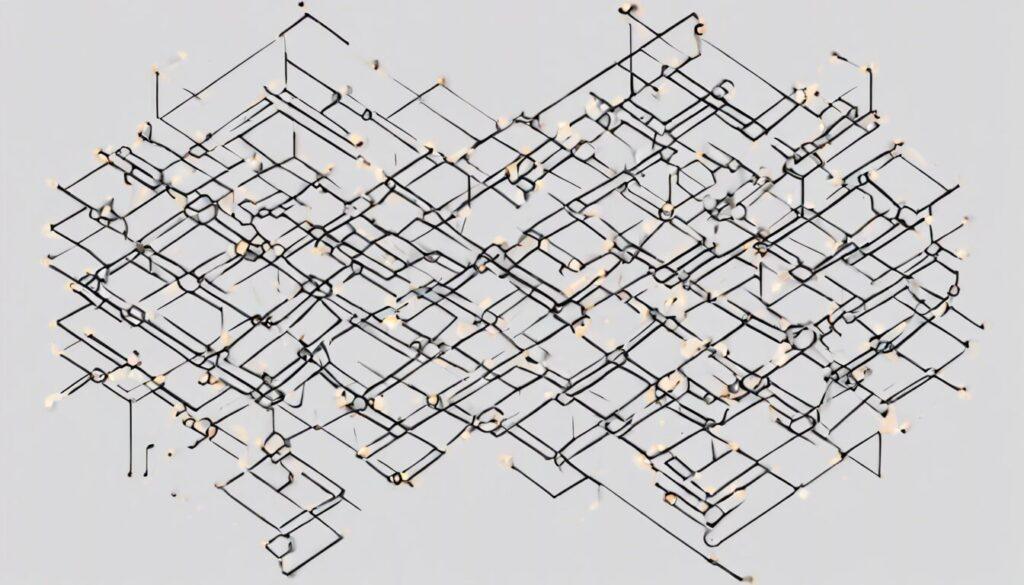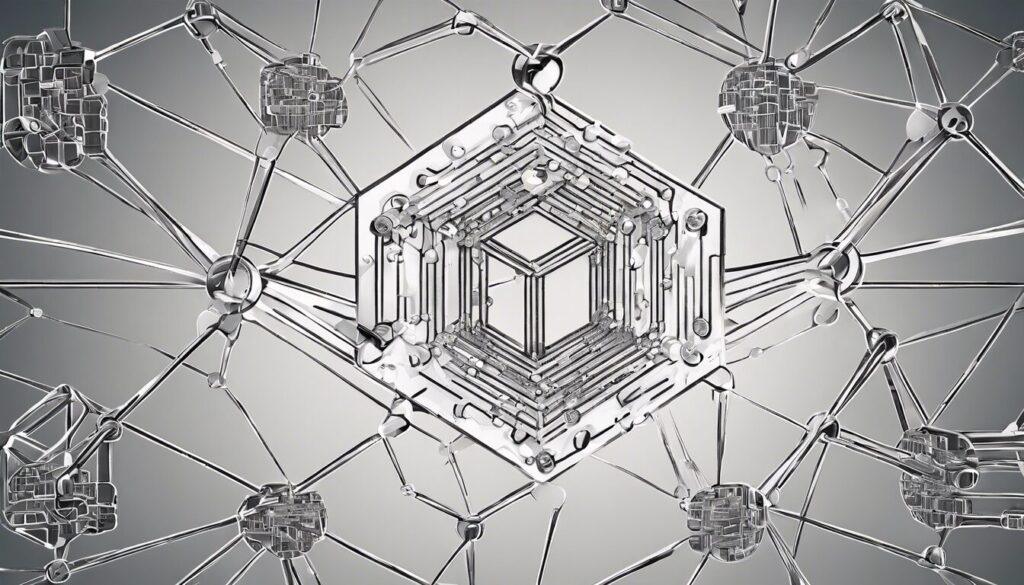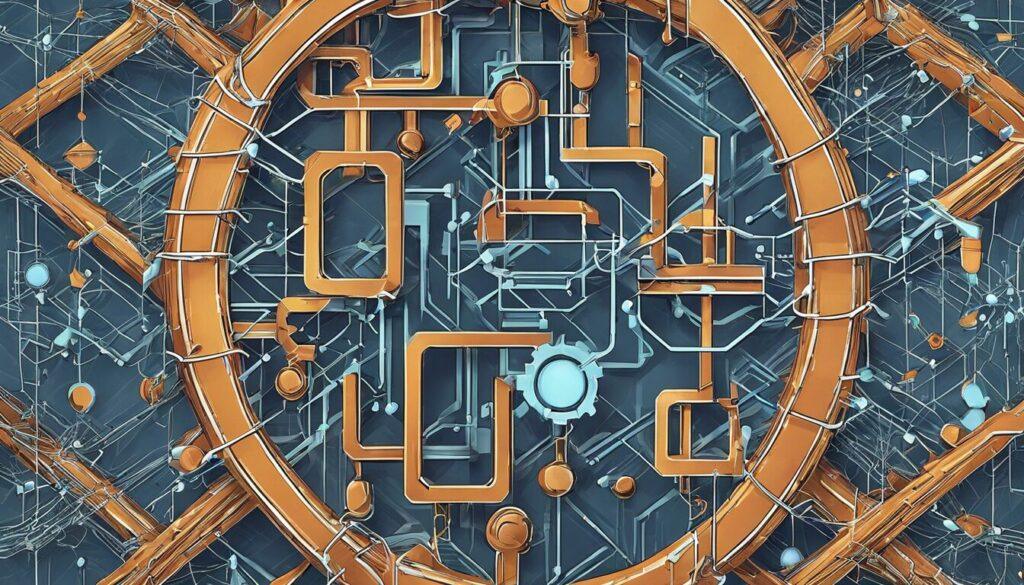Blockchain Facts: What Is It, How It Works, and Why It Matters

Blockchain Facts: What Is It, How It Works, and Why It Matters
Introduction to Blockchain Facts
Imagine a world where you could transfer money across the globe, buy a house without needing a notary, or even track the supply chain of your food in real time. All this is possible with blockchain technology, a revolutionary concept for industries and individuals.
Blockchain Facts: What Is It, How It Works, and Why It MattersBut what is blockchain? How does it work, and why is it so groundbreaking? Whether you are a beginner or an industry expert, this guide will give you an in-depth understanding of blockchain technology and its various applications.
In this blog post, you will learn:
- What blockchain is and how it functions.
- Key blockchain facts and myths debunked.
- Blockchain technology in several sectors.
- The way blockchain can change banking, healthcare, and other industries.
- Potential applications of blockchain technology.

What You Will Learn:
- Definition of Blockchain: A simplified explanation suitable for both beginners and advanced readers.
- How Blockchain Works: A breakdown of the mechanics behind blockchain, including nodes, blocks, hashes, and consensus algorithms.
- Blockchain Use Cases: Real-world examples of blockchain technology in finance, healthcare, and supply chains.
- Key Concepts: Explore the fundamentals of decentralization, immutability, and cryptographic security.
- Blockchain for Beginners: Answering basic questions like “What is blockchain?” and “How do you explain blockchain to dummies?”
- Advanced Insights: For readers who want to learn more about decentralized finance (DeFi), blockchain governance, and smart contracts.
- Frequently Asked Questions: A thorough section answering frequently asked questions.
What is Blockchain?
At its core, blockchain is a distributed ledger technology that records transactions in a secure, transparent, and immutable way. Think of it as a digital book where data (or transactions) are grouped into blocks and chained together in chronological order. Each block contains a list of transactions, a timestamp, and a cryptographic hash of the previous block, ensuring integrity.
Unlike traditional databases that rely on a central authority (such as a bank), blockchain operates on a decentralized network of computers (or nodes). This decentralized nature makes blockchain resistant to tampering and fraud, as altering a single block would require changing every block across the entire network—a nearly impossible feat.
How Blockchain Works: A Step-by-Step Breakdown
- The Transaction: A user initiates a transaction, which could be anything from sending cryptocurrency to creating a smart contract.
- Block Creation: This transaction with others into a block. Each block has a unique cryptographic hash, which acts like a fingerprint.
- Validation and Consensus: Nodes on the blockchain network validate the transactions. Depending on the blockchain, this process could use different consensus mechanisms, such as Proof of Work (PoW) or Proof of Stake (PoS).
- Adding to the Chain: Once validated, the block is added to the existing blockchain. Each block is linked to the previous one, creating a chain of blocks (hence the name “blockchain”).
- Immutability: After a block is added to the blockchain, it cannot be altered. This immutability ensures data integrity and trust in the system.
Key Blockchain Facts and Myths Debunked
- Fact: Blockchain is not the same as Bitcoin. While Bitcoin was the first application of blockchain technology, blockchain can be used for much more than just cryptocurrencies.
- Myth: Blockchain is entirely anonymous. In reality, while some blockchains offer privacy features, most are pseudonymous. Transactions can often be traced back to individual users.
- Fact: Blockchain can operate without a central authority, making it a decentralized system. This decentralization increases security and reduces the need for intermediaries like banks.
- Myth: Blockchain is unhackable. While blockchain is highly secure due to its cryptographic nature, vulnerabilities can still exist, especially at the application or smart contract level.

Blockchain in Action: Real-World Applications
Finance (Decentralized Finance or DeFi)
Blockchain has made significant strides in the finance sector. Through decentralized finance (DeFi), blockchain enables peer-to-peer transactions without intermediaries like banks. Ethereum, for instance, powers decentralized applications (DApps) that allow users to lend, borrow, and earn interest on digital assets without traditional financial institutions.
Healthcare
Blockchain can revolutionize healthcare by providing a secure and transparent way to store medical records. Using blockchain, patients can control their medical data, share it with healthcare providers, and track the entire history of their medical treatments. Moreover, blockchain ensures that medical records are tamper-proof and always up to date.
Supply Chain Management
One of the most promising uses of blockchain is in supply chain management. By utilizing blockchain, companies can track products from their origin to their final destination, ensuring transparency and accountability at every step. For example, Walmart uses blockchain to trace the origins of its food products, reducing the risk of contamination and improving food safety.
Voting Systems
Blockchain-based voting systems can potentially eliminate voter fraud by providing a transparent, tamper-proof ledger of votes. A blockchain provides an unprecedented degree of trust and transparency in election processes because the data on it cannot be changed.
How Do Blockchains Make Money?
Blockchain projects can be profitable in various ways. Here are some of the key revenue streams:
- Transaction Fees: Users must pay a small fee to complete a transaction on a blockchain network. For instance, Bitcoin miners earn by validating transactions and adding them to the blockchain.
- Blockchain as a Service (BaaS): Companies like Microsoft and IBM offer blockchain-based solutions to other businesses, charging a fee for using their platforms.
- Staking Rewards: Some blockchains, like Ethereum 2.0, allow users to “stake” their cryptocurrency to help validate transactions. In return, stalkers earn rewards in the form of additional cryptocurrency.
Advanced Blockchain Concepts: A Deeper Dive
Smart Contracts
Smart contracts are self-executing contracts where the terms are written directly into code. These contracts automatically enforce and verify agreements, eliminating the need for intermediaries. For example, a smart contract might automatically release funds once a product is delivered without needing a third party to oversee the transaction.
Non-Fungible Tokens (NFTs)
NFTs are unique digital assets stored on a blockchain. They can represent anything from art and music to in-game items and real estate. Unlike cryptocurrencies like Bitcoin, which are fungible (one Bitcoin is identical to another), NFTs are one-of-a-kind, making them valuable for collectors and creators.
Decentralized Finance (DeFi)
DeFi refers to a broad range of financial services built on blockchain technology. These services, such as lending, borrowing, and trading, operate without traditional banks. DeFi platforms use smart contracts to automate transactions and offer users more control over their assets.
Frequently Asked Questions (FAQs)

Conclusion and Call-to-Action
Blockchain technology is more than just a trend; it’s a game-changer that’s reshaping industries worldwide. From securing financial transactions to transforming supply chains, blockchain’s potential is limitless. Now that you have a solid understanding of how blockchain works and its key applications, it’s time to explore how you can incorporate blockchain into your business or personal ventures.
Ready to dive deeper? Subscribe to our newsletter for the latest updates on blockchain technology, industry news, and tips on how to stay ahead in the blockchain revolution!





It’s a pleasure to read articles that are so well structured.
I learned a lot from this article, thanks for your expertise. By the way, if you’re looking for more great content, check out this site: https://insurancego.store/high-deductible-health-insurance-plans/.
This article is both informative and enjoyable to read.
It’s always a pleasure to read your posts, keep it up!
An excellent article, very well-documented and easy to read.
A very insightful analysis, I appreciate your perspectives.
An excellent article, I highly recommend it to all my friends.
A clear and insightful read, keep publishing content like this!
I truly appreciate the clarity in your explanations. By the way, if you’re looking for more great content, check out this site: https://www.gagnerargent.online/maitriser-laffiliation-sur-instagram/.
Your expertise shines through in every sentence, thank you for this post.
I truly appreciate the clarity in your explanations. By the way, if you’re looking for more great content, check out this site: https://www.shortener.cloud/netflixs-streaming-revolution/.
I truly appreciate the clarity in your explanations. By the way, if you’re looking for more great content, check out this site: https://commentgagner.blog/fonds-communs-de-placement/.
A very insightful analysis, I appreciate your perspectives. By the way, if you’re looking for more great content, check out this site: https://commentgagner.blog/les-cles-de-la-liberte-professionnelle/.
This site is such a valuable resource for information, thank you!
This blog is a goldmine of useful information. I’ll be back regularly!
This post is incredibly well-written! I learned a lot by reading it. By the way, if you’re looking for more great content, check out this site: https://www.gagnerargent.online/opportunites-de-travail-a-distance/.
Thank you for this exceptional work. It’s an enjoyable and informative read. By the way, if you’re looking for more great content, check out this site: https://www.shortener.cloud/google-finance/.
Thanks for sharing this valuable content. Very well structured and easy to read! By the way, if you’re looking for more great content, check out this site: https://commentgagner.blog/le-marketing-et-la-promotion-en-dropshipping/.
Thanks for this very useful and well-written post.
Thanks for this detailed analysis. I’ve shared this post with my friends. By the way, if you’re looking for more great content, check out this site: https://www.codetalenthub.io/web-app-development-outsourcing/.
Your writing is really engaging, I was hooked from start to finish.
Thank you for this post! I love how you make complex topics easy to understand.
Thanks for this post. It’s both comprehensive and easy to understand.
This is exactly what I needed to better understand the subject.
This article is both informative and enjoyable to read.
Great article. I learned a lot of new things today. Thank you!
Thank you for this article, it allowed me to better understand a complex subject.
This was a very enlightening read, thanks for your work.
I am going to share this article with everyone who might be interested.
I like the accessible tone of your articles, thank you for making this topic understandable.
I recommend this article to anyone who wants to learn more about this topic! By the way, if you’re looking for more great content, check out this site: https://www.mostexpensive.store/luxury-swiss-watches-a-timeless-elegance/.
Your expertise in this field is impressive, thank you for this article!
Kudos on this article! It’s packed with useful, well-explained information.
Your blog is now my reference for this kind of information. By the way, if you’re looking for more great content, check out this site: https://commentgagner.blog/expert-du-trading-de-crypto/.
I found this article particularly useful, I will gladly read it again.
This is exactly the kind of resources I needed, thanks for sharing! By the way, if you’re looking for more great content, check out this site: https://www.gagnerargent.online/augmenter-revenus-avec-un-seo-optimise/.
Always so well written, I appreciate the quality of your content.
This post really helped me understand the topic. Thank you! By the way, if you’re looking for more great content, check out this site: https://www.shortener.cloud/netflixs-streaming-revolution/.
A really useful and well structured article, I highly recommend it!
I learned so many new things from reading this post.
I learned a lot from this article, thanks for your expertise. By the way, if you’re looking for more great content, check out this site: https://www.shortener.cloud/instagram-influencers-tips/.
This article goes straight to the point while being very complete. Thank you for that! By the way, if you’re looking for more great content, check out this site: https://www.mostexpensive.store/most-expensive-jewelry-ever-sold/.
Up-to-date and well-organized information, very useful for me.
I appreciate the clarity and structure of this article, it is easy to follow.
I appreciate the clarity and structure of this article, it is easy to follow.
It’s so well-written and clear! I really enjoyed this post. By the way, if you’re looking for more great content, check out this site: https://www.gagnerargent.online/tirer-profit-de-votre-presence-en-ligne/.
This article was exactly what I was looking for. Thank you so much!
You were able to explain difficult concepts in a simple and accessible way.
Your blog is a real treasure trove for information on this topic.
Thanks for sharing this valuable and informative content. I’ll be back regularly! By the way, if you’re looking for more great content, check out this site: https://www.gagnerargent.online/entreprise-en-ligne-prospere/.
It is always a pleasure to read your articles. Keep teaching us!
I appreciate the clarity and structure of this article, it is easy to follow.
A very insightful analysis, I appreciate your perspectives. By the way, if you’re looking for more great content, check out this site: https://commentgagner.blog/createur-de-contenu-a-succes/.
Congratulations for this article! It is full of useful and well explained information. By the way, if you’re looking for more great content, check out this site: https://www.gagnerargent.online/contenu-qui-rapporte/.
Kudos on this article! It’s packed with useful, well-explained information. By the way, if you’re looking for more great content, check out this site: https://www.gagnerargent.online/augmenter-revenus-2024/.
Quality content, which I will not hesitate to recommend to others. By the way, if you’re looking for more great content, check out this site: https://www.shortener.cloud/tiktok-algorithm-2024/.
Your blog is now in my favorites to check it regularly!
Thanks for this post. It’s both comprehensive and easy to understand.
I love the variety of topics covered on this blog.
An excellent article, I highly recommend it to all my friends. By the way, if you’re looking for more great content, check out this site: https://www.mostexpensive.store/luxury-culinary-experience/.
A great article, I highly recommend it to all my friends.
Thank you for this article. It is both complete and easy to understand.
Thank you for this article, it allowed me to better understand a complex subject. By the way, if you’re looking for more great content, check out this site: https://www.gagnerargent.online/maitre-de-la-monetisation-en-ligne/.
Your blog is now bookmarked. Keep up the great work! By the way, if you’re looking for more great content, check out this site: https://www.gagnerargent.online/strategies-de-monetisation-sur-internet/.
It’s always a pleasure to read your posts, keep it up! By the way, if you’re looking for more great content, check out this site: https://insurancego.store/comprehensive-guide-to-pet-insurance/.
This article goes straight to the point while being very complete. Thank you for that! By the way, if you’re looking for more great content, check out this site: https://www.mostexpensive.store/ultra-luxury-home-decor-pieces/.
You really have a unique way of approaching complex topics.
Keep it up, it’s a real pleasure to read your articles. By the way, if you’re looking for more great content, check out this site: https://www.gagnerargent.online/investissement-et-trading-en-ligne-2024/.
Thank you for this precise lighting, it answers my questions exactly.
This blog is a goldmine of useful information. I’ll be back regularly!
Your blog is now in my favorites. Keep it up!
This article really enlightened me on the subject, thank you for this detailed approach!
This blog is a gold mine of useful information. I will come back regularly!
It’s so well-written and clear! I really enjoyed this post.
I love the variety of topics covered on this blog. By the way, if you’re looking for more great content, check out this site: https://www.shortener.cloud/navigating-youtube/.
A clear and insightful read, keep publishing content like this!
I find this blog really enriching. Keep it up, it’s exactly what I needed!
The information shared here is of great value, thank you for your work.
A substantive content that has taught me a lot, I thank you for that.
Your blog is a real treasure trove for information on this topic.
An excellent article, very well-documented and easy to read.
Thank you for this detailed analysis. I shared this article with my friends. By the way, if you’re looking for more great content, check out this site: https://www.gagnerargent.online/booster-revenus/.
This article allowed me to see this topic from another angle, thank you!
An excellent article, I highly recommend it to all my friends. By the way, if you’re looking for more great content, check out this site: https://insurancego.store/aetna-better-health-of-kentucky-2023/.
I love the variety of topics covered on this blog.
This article really helped me understand the topic. Thank you!
I love the variety of topics covered on this blog.
You have made a complicated subject very simple to understand. Congratulations! By the way, if you’re looking for more great content, check out this site: https://www.gagnerargent.online/reussir-financierement/.
I find this blog really enriching. Keep it up, it’s exactly what I needed!
Thank you for these practical tips, they are easily applicable! By the way, if you’re looking for more great content, check out this site: https://www.shortener.cloud/alibaba-b2b-marketplace/.
Thank you for this post, very enriching and easy to follow.
You were able to explain difficult concepts in a simple and accessible way. By the way, if you’re looking for more great content, check out this site: https://insurancego.store/real-estate-investors/.
Thank you for addressing this topic in such detail and clarity. By the way, if you’re looking for more great content, check out this site: https://www.shortener.cloud/from-musical-ly-to-tiktok/.
I find this blog really inspiring and well documented.
Thanks for this detailed analysis. I’ve shared this post with my friends.